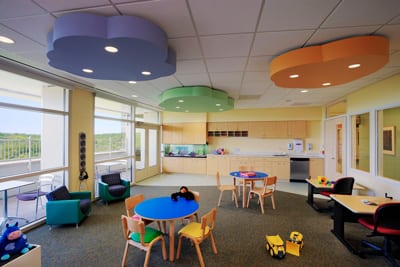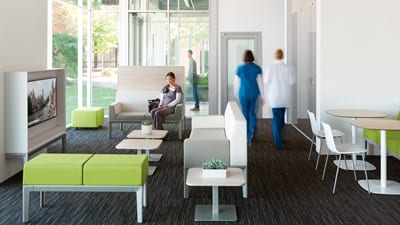Finding the right furniture for your healthcare facility is always a challenging task. You can’t choose any old set of chairs when you’re seating patients who may have movement challenges or easily-spread infections.
Here are five critical factors to consider when choosing healthcare furniture.
1. Make Sure Healthcare Furniture Can Be Easily Cleaned
While clean furniture is important anywhere, it’s vital in a healthcare setting. You don’t want patients to catch a deadly fungus from the furniture.
Diseases can spread between patients and staff even when everyone is taking proper precautions, and hard-to-clean furniture may result in missed cracks and crinkles where a virus could lurk.
Healthcare chairs and seating should always include a large space for cleaning between the seat and the back of the chair. This makes it harder for bacteria to grow undisturbed between the seat and the back of the chair.
Clean out spaces in seating also make life easier for your cleaning staff, who can only do so much to ensure that upholstery is cleaned completely. A great starting guideline is to make sure cleaning staff never have to stick their hands in an area where they can’t see what they’re touching.
Consider the materials of your furniture, including tables and cabinetry. Both the interior and exterior of each piece of furniture should be made from easy-to-clean, non-porous materials.
Since wood and veneer furnishings are highly porous, they are not safe for use in a healthcare facility. Laminate is a much more cleanable option for your reception desk and other hard furniture.
2. Use Furniture That’s Safe for Patients of All Ages
Think about the needs of patients who use your healthcare facility. Are there many elderly patients who have trouble getting out of standard chairs? Do some of your patients need bariatric (extra wide) furniture to sit comfortably?
In most adult healthcare settings, at least 20% of furniture should be bariatric to ensure that all patients feel welcome. Some larger patients may not want to use a bariatric chair, so it can help to include armless seating options as well. Furniture should also have a safe weight capacity of at least 750 pounds to ensure there’s no chance of chairs breaking under a patient’s weight.
In addition to having a safe weight capacity, chairs and other seating should be able to support an individual getting in and out of their seat. Look for chair arms with easy-to-grip, sturdy padded armrests.
Orthopedic and geriatric facilities may need to provide hip chairs for guests who have trouble getting in and out of regular chairs. If you frequently notice patients standing in waiting areas, you may need to change your furniture to better suit their needs.
3. Consider Infection Control When Choosing Furniture
Some materials can be disinfected more easily than others. Look for materials with antimicrobial properties, or at least something that’s easy to wipe down. There are a wide variety of antimicrobial additives made from materials like zinc, copper, and silver ion that can be added to wood and other furniture.
Make sure furniture materials resist bodily fluids and other liquids. It goes without saying that bodily fluids are more likely to be released in healthcare settings and may spread bacteria or viruses.
4. Choose Sturdy Furniture That Will Last
In healthcare settings, scratched furniture isn’t just aesthetically displeasing: it’s also a health risk. Dents can be a breeding ground for bacteria that could cause an outbreak among patients. Make sure to choose furniture that won’t scratch easily to keep your patients safe.
You’ll also need to consider regular wear in busy waiting rooms and exam areas. Tables and seating should be both moisture-resistant and durable to withstand constant use by patients of all ages. Also look for metal-to-metal connections in framework, which can make furniture more durable.
5. Create a Welcoming and Beautiful Space for Patients
 Aesthetics are an often-ignored but surprisingly important aspect of healthcare settings. A sterile-looking environment could be especially stressful for children. Your patients will feel more relaxed and be able to heal faster in a pleasant environment.
Aesthetics are an often-ignored but surprisingly important aspect of healthcare settings. A sterile-looking environment could be especially stressful for children. Your patients will feel more relaxed and be able to heal faster in a pleasant environment.
Rather than creating an all-white environment, choose inviting colors for your furniture, wall paint, and decor. These details matter more than you might think when it comes to calming patients’ nerves and keeping people comfortable.
Everett Office Furniture offers high-quality healthcare furniture to provide comfort for hospital staff and patients. View our products and get a quote today.